This year has certainly been a whirlwind one for wildlife conservation. We’ve had our hands full fighting threats to wildlife, habitat, landmark conservation laws, and climate policies. But we’ve had a major positive impact, and we wanted to highlight 18 of our biggest accomplishments this year!

1. We achieved a crucial legal victory this fall when a federal judge ruled in our favor, holding the U.S. Fish and Wildlife Service (FWS) accountable for its attempts to undermine Red Wolf recovery. Defenders generated more than 37,000 public comments and won the support of North Carolina’s governor for Red Wolf recovery in the state, helping to secure our legal victory.

2. We launched a new campaign to help address storm-water runoff, the biggest source of toxics that impact southern resident orcas in Puget Sound — a critically imperiled species. Our Orcas Love Raingardens campaign highlights the link between southern resident orcas and toxic water pollution. It prioritizes opportunities for schools, parks and neighborhoods in Washington state to install more raingardens throughout the community to directly combat the storm-water runoff problem.
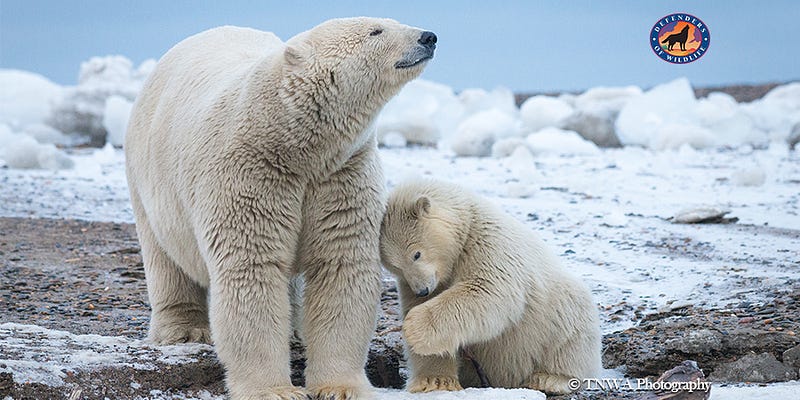
3. Defenders helped fund new research on mapping polar bear maternal dens in the western Arctic using unmanned aerial vehicles. We produced a video detailing this exciting new tool, which FWS has adopted for its use. This critical research aims both to identify polar bear winter dens to keep people, ice roads, and other development a safe distance away and to improve our understanding of female polar bear den fidelity and how climate change affects den locations.
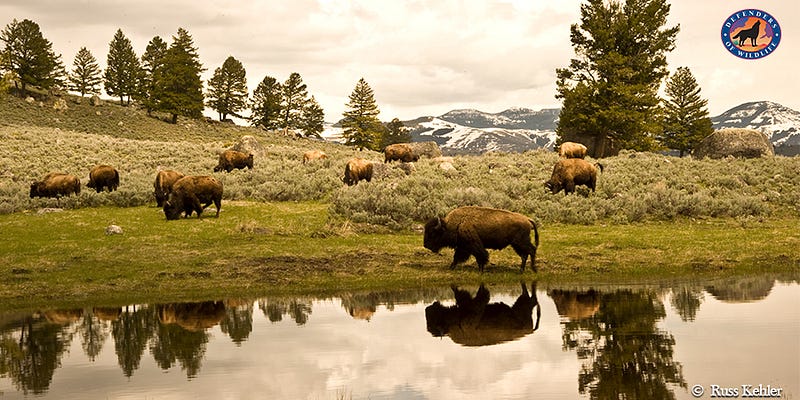
4. Defenders is partnering with Wildlife Conservation Society (WCS) and the Blackfeet Nation on an exciting new wild bison restoration effort. In 2016, 87 genetically pure bison from Canada’s Elk Island National Park were transported to the Blackfeet Reservation to begin the effort, but theyhave been kept in a very small pasture awaiting a permanent home. This year, we successfully acquired the first-year lease of a private ranch in a key location to provide the new home for this small herd.

5. The U.S. Department of Agriculture’s Natural Resources Conservation Service has announced the addition of our Southeastern Hellbender Conservation Initiative to its Working Lands for Wildlife partnership. This initiative is a collaboration led by Defenders to support farmers using conservation practices on their lands that help restore hellbender habitat.
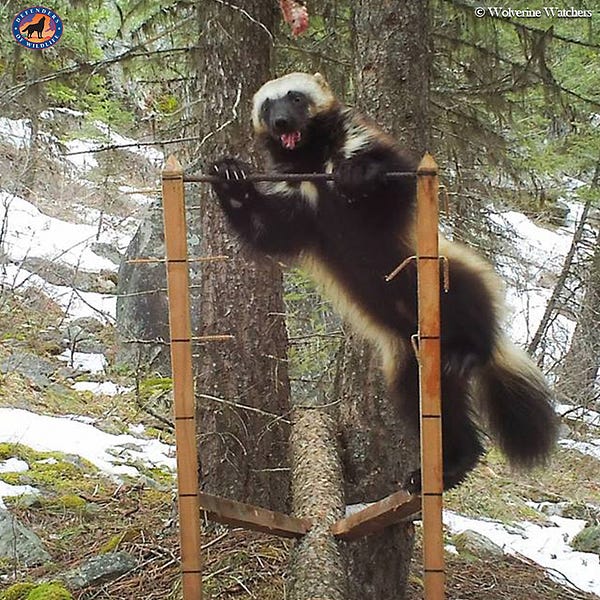
6. We completed the fourth year of our Wolverine Watchers project, a highly popular community science forest carnivore monitoring effort on the rugged Bitterroot National Forest (BNF) in Montana. Nearly 140 volunteer scientists assisted with every aspect of the monitoring effort and documented the presence of 29 different species. Volunteers recorded seven individual wolverines at 14 monitoring stations and, for the first time, wolverine kits!
7. In response to two of Defenders’ listing petitions, the National Marine Fisheries Service (NMFS) listed the oceanic whitetip shark and the giant manta ray as threatened under the ESA. Now we can be sure that these species get the protections they need to begin recovering.

8. We released 27 scarlet macaws in the Biosphere Reserve of Los Tuxtlas, Mexico in August. This was our seventh scarlet macaw release there, and the birds reintroduced this summer will join 130 already in the wild. Through this series of reintroductions, we’ve established what is now the second largest wild population of scarlet macaws in Mexico, where they are highly imperiled. These reintroductions have brought scarlet macaws back from the brink of extinction, and the birds are forming breeding pairs and nesting in both natural nests and artificial ones partially funded by Defenders.
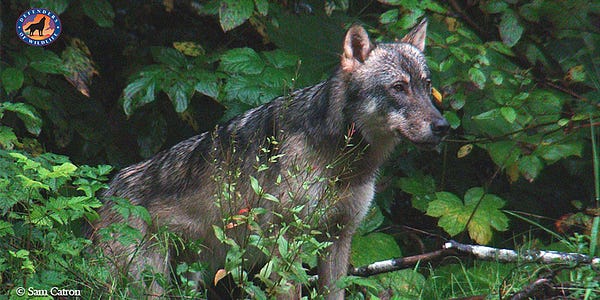
. Following formal objections filed by Defenders and others, the Forest Service dramatically reduced the size of a proposed old-growth timber sale on Wrangell Island in the Tongass National Forest by about 90%, protecting thousands of acres of habitat for wildlife like Alexander Archipelago wolves, northern goshawks and brown and black bears.

10. Defenders opened our first-ever office in Texas to address critical threats to species and habitats in the Lone Star state. Texas supports some of the largest number of threatened and endangered species in the country, including the Houston toad, lesser prairie chicken, Gulf Coast jaguarundi, dunes sagebrush lizard, Mexican long-nosed bat, Kemp’s ridley sea turtle, and ocelot. So far, our work is focusing on significant threats posed by the proposed border wall, efforts to stop three proposed liquid natural gas export facilities that could block ocelot movement between the Laguna Atascosa National Wildlife Refuge in Brownsville and five habitats in Mexico, and building collaborative relationships with private land owners, state and federal agencies, conservation organizations and other groups with shared interests in biodiversity.
11. Defenders developed a comprehensive new report, In the Shadow of the Wall, to illustrate the damage a border wall would have on wildlife and habitats along the southern border area. The report focuses on key species such as jaguars, ocelots, Mexican gray wolves, California condors, Sonoran pronghorn, and other threatened and endangered species. Over 2,500 scientists from 43 countries have endorsed the article.
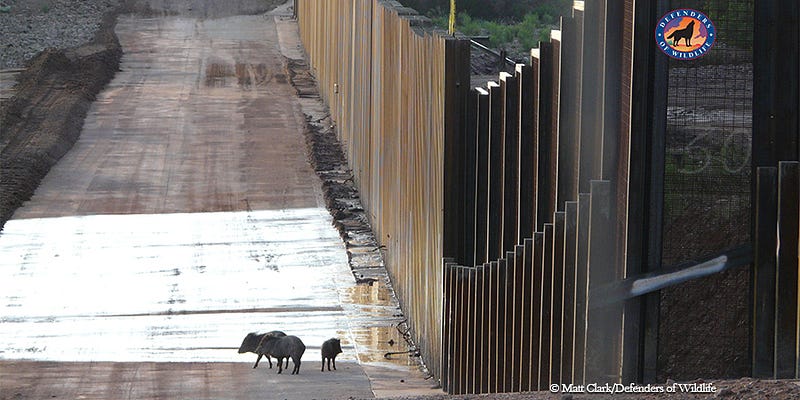
Scientists’ Call to Action: The U.S.-Mexico Border Wall Threatens Biodiversity and Binational Conservation
Join us in expressing unified concern over the U.S.-Mexico border wall’s negative impacts
12. We continued to advance climate change adaptation planning for wildlife on public lands with stakeholders in the U.S. and at international conferences and meetings across the country — even as the Trump administration has abdicated our country’s leadership on this seminal issue. Our plenary presentation at the Everglades Coalition conference in January explored the effects of hurricanes on key habitats, the role that ecosystems serve in mitigating storm damage to human communities, and ways that managers can help improve the resilience of natural areas.
13. Defenders developed, prioritized and deployed recommendations for strengthening conservation programs in the 2018 Farm Bill, the largest source of funding for species conservation on private lands nationwide. We spent months analyzing, advocating and improving upon dozens of provisions in both the House of Representatives and Senate versions of the bill, with the goal of producing final legislation that works for both people and wildlife.
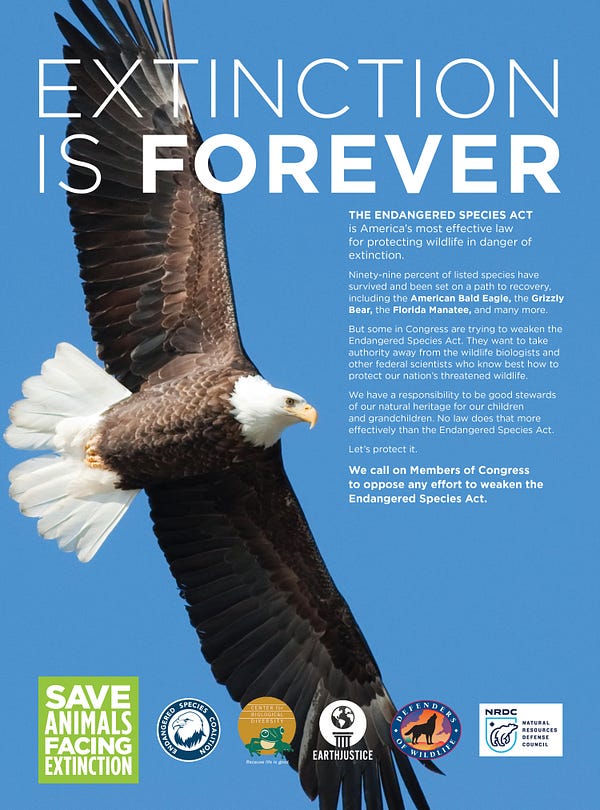
14. We successfully led Capitol Hill and grassroots advocacy efforts to stop scores of direct attacks to undermine the Endangered Species Act (ESA). We played a leading advocacy role in helping to stop enactment of over 110 bills, riders and amendments damaging to the ESA. We also helped to achieve major victories for the ESA, the Santa Ana National Wildlife Refuge (NWR), and national forests in the final Fiscal Year 2018 omnibus spending bill, which had the potential to be a disaster for wildlife.
15. Defenders’ former President and CEO Jamie Rappaport Clark and other Defenders spokespersons helped focus remarkable attention in the national press against a damaging proposal by the Trump administration to rewrite the regulations implementing the ESA. We drafted detailed comments and coordinated weekly discussions with over 25 organizations to raise the public visibility of the proposals and helped generate 800,000 public comments in opposition.
16. In August, the U.S. District Court for the District of South Carolina ruled for Defenders and our partners in our challenge to the Trump administration’s suspension of the Obama administration’s Clean Water Rule. The Clean Water Rule protects the drinking sources of nearly a third of the U.S. population under the Clean Water Act, including many seasonal streams and wetlands. The court’s ruling reinstated the Clean Water rule nationwide except in 24 states where it had previously been overruled.

17. Defenders published the first comprehensive overview of the status of ESA recovery planning in the leading journal Conservation Letters. Our research shows that a quarter of listed species lack recovery plans, half of all plans are over 22 years old and there is extensive variation between agencies and regions in how plans are implemented. Our research provides key evidence that major improvements are needed for recovery planning. This research is closely related to our ongoing work to develop web-based ESA recovery plans, which can help alleviate challenges faced by recovering and imperiled species.
18. Working with partners, we launched a major new project in New York aimed at increasing the pace of solar energy development on Long Island by identifying low-impact sites for generation based on local zoning and other laws, solar insolence and land protection priorities. The project will also conduct social science research in communities to understand residents’ perceptions of solar energy generation, and to identify and address barriers to development. We believe that if we can find room for solar energy facilities on a landscape as crowded as Long Island, we can export that model to innumerable other places in the country.
Thank you for helping us create a better world for wildlife in 2018. May 2019 bring you and your families health and happiness, and bring a more peaceful and protected world for wildlife.








